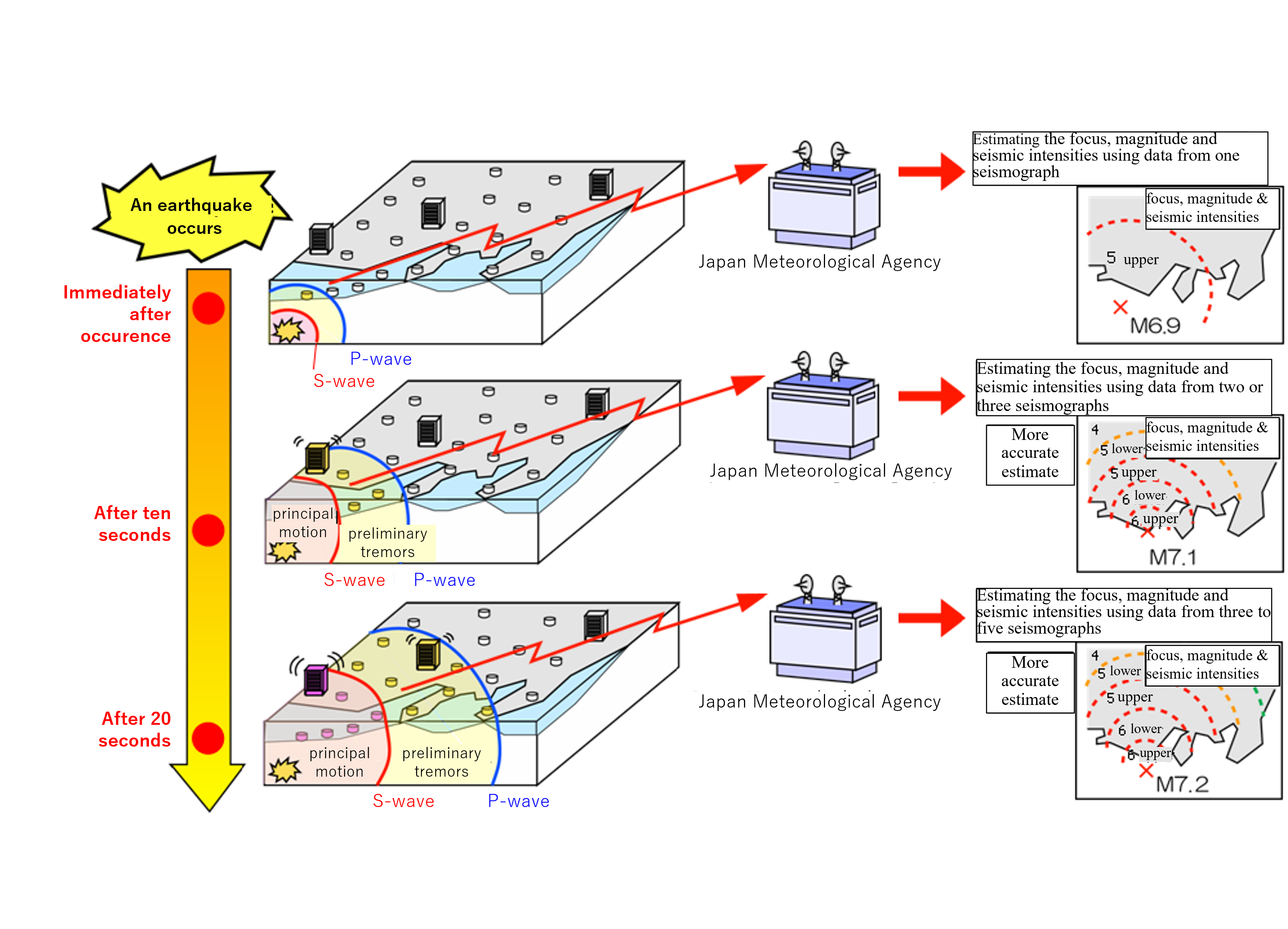
Disaster Management Manual
A manual for practitioners and decision makers!

Disaster Management Manual
A manual for practitioners and decision makers!
An earthquake early warning system is "to quickly analyze the distribution of seismic source elements and seismic motions after an earthquake has occurred, and to convey this information to road users for use in road disaster prevention.
There are two main types of systems: early warning systems, which aim to predict the magnitude of shaking before the main motion of an earthquake and prepare for it, and early earthquake damage estimation systems, which predict the extent of damage based on the intensity of the shaking.
In the early warning system, the location of the epicenter and the scale of the earthquake are estimated immediately after the occurrence of the earthquake by analyzing the seismic wave data captured by seismographs at observation points close to the epicenter. The system is designed to help mitigate earthquake disasters by providing information on the seismic intensity as soon as possible. For earthquakes with distant epicenters (trench earthquakes, etc.), a certain amount of grace time can be expected in principle. On the other hand, for earthquakes with close epicenters (e.g., direct-type earthquakes), a grace period may not be expected near the epicenter. Since the development of a wide-area observation network is a prerequisite, national meteorological agencies and similar organizations are developing early warning information. In the road sector, there have been no cases where early warning systems have been developed independently. Many road managers use the early warning earthquake information provided by national meteorological forecasting organizations for their road operations.
The early earthquake damage estimation system uses seismic wave data recorded by seismographs placed at the site immediately after the occurrence of an earthquake and data on the ground and structures prepared in advance to estimate the extent and scale of damage to the roads. By estimating the degree and extent of damage, the system supports the prioritization of emergency activities. Many road managers have adopted the early earthquake damage estimation system. This system can also perform damage simulation by using scenario seismic waves. The results of the simulations can be used to develop a rational disaster prevention plan.
Figure 3.4.3 1 shows the image of the mechanism of the earthquake early warning system.
